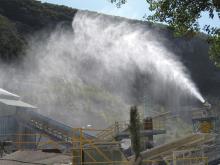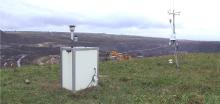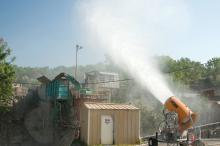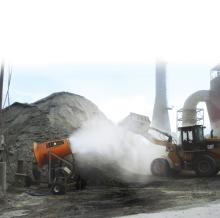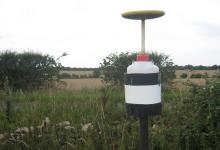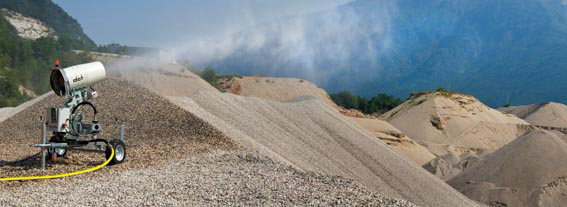
Airborne dust can be a major problem for quarry operators but enclosing equipment is not always possible. ABE takes a look at other innovative solutions
The location of many quarries close to residential areas means that the impact of airborne dust is a problem that has to be dealt with. But dust can be a very difficult issue to define, as what constitutes a nuisance is very subjective and can vary from site to site.
"Nuisance caused by dust is commonly accepted as being the fraction of dust above 10µm in diameter, or the visible fraction," explains
"In contrast, nuisance dust has no such standards to which operators need to comply and it is possible that the first an operator becomes aware of nuisance dust being an issue in a locality is an increase in complaints made by members of the public. In certain circumstances these may lead to subsequent enforcements by the relevant authority." Monitoring of dust plays an important role in establishing the background levels and the sensitivity of the local community. There are a number of techniques available to establish the environmental conditions that lead to a specific rate of deposition. But once this has been established the quarry operator needs to find an effective way to prevent dust levels reaching nuisance levels.
In recent years many quarry operators have chosen to build housings around fixed crushing and screening plants, as well as placing covers on fixed, and sometimes even field, conveyors. Reducing dust from mobile crushing and screening equipment, as well as drilling equipment, is still a challenge, as is managing dust produced by vehicles trafficking around the site. Damping down with bowsers is a time consuming task that is often not that effective.
"Reducing dust at source is not always possible but once the particles are in the air, it can be difficult to remove it," said
"The water volume is set by the user but the typical consumption is 25litres per minute. The system can be operated from a water bowser or direct feed." According to Fritz, the systems can either be supplied as mobile units that can be moved around with on site mobile equipment or can be installed as fixed units to tackle a long term problem. "The solution for each site is bespoke and we take account of the predominant wind direction and dust source when looking at the options," he said. "They can also be programmed to automatically switch on when the wind changes direction or reaches a set speed." One quarry, based in Northern Italy, which Technoalpin worked with had tried to locate its crushing and screening equipment within the quarry to minimise dust but had received continued complaints from nearby residents. "In the past the company had tried to cover equipment and drive a bowser round but once the dust was in the air the quarry found it difficult to control," said Fritz. "We worked with them to find a solution and successfully developed an automated system with three units through looking at the predominating wind speed and direction and
production style." Technoalpin's approach to dust is just one of many, but it is clear that the European quarrying industry will need to look for alternative solutions for dust control in order to minimise the impact on both neighbours and the environment.

